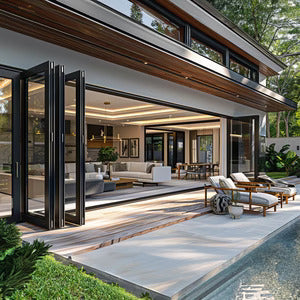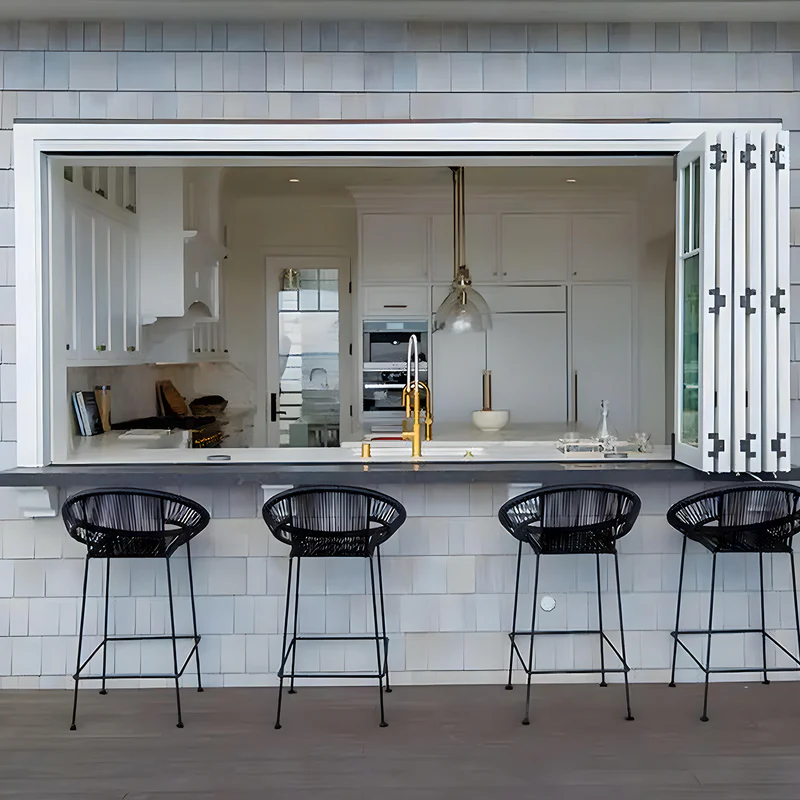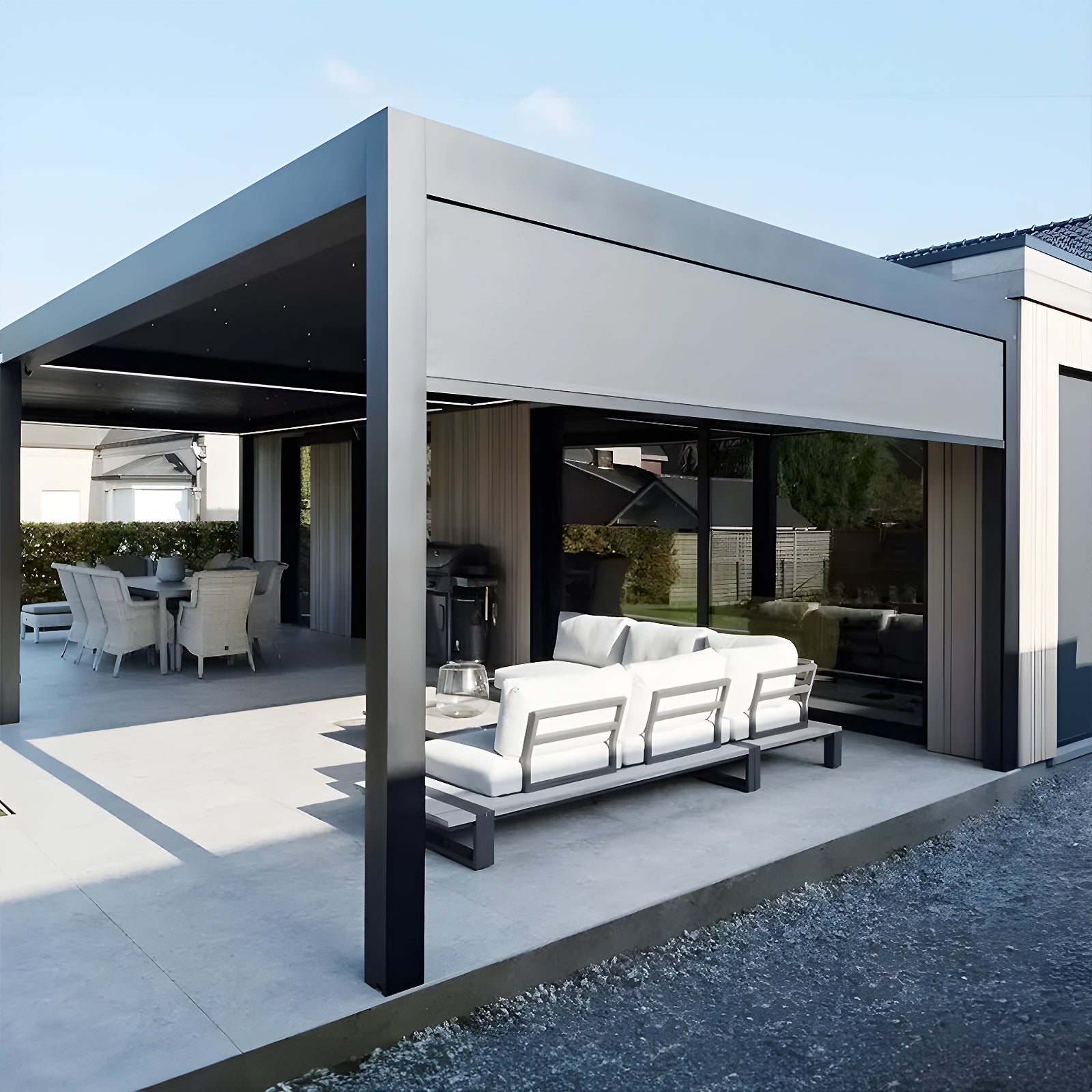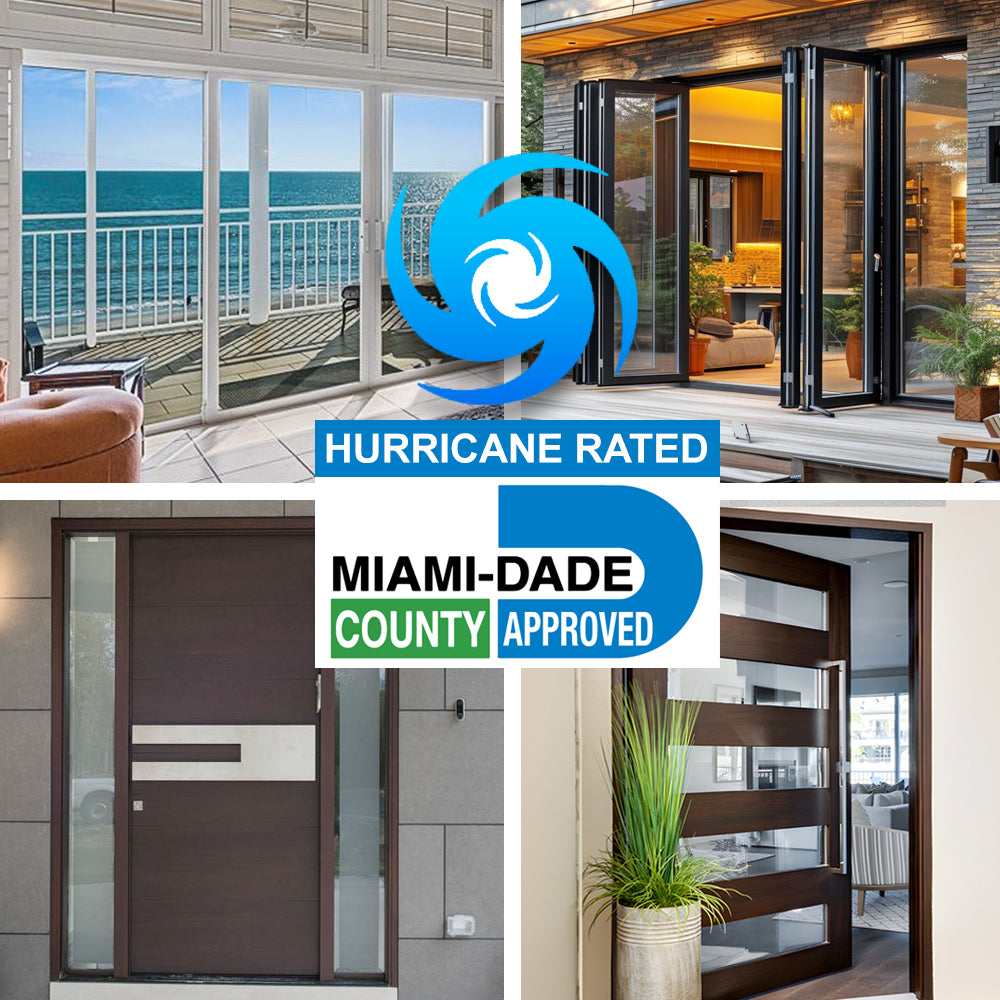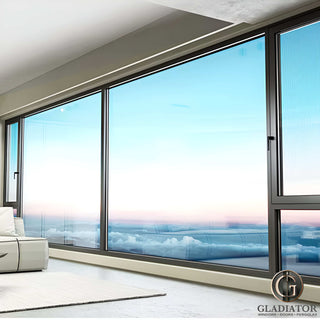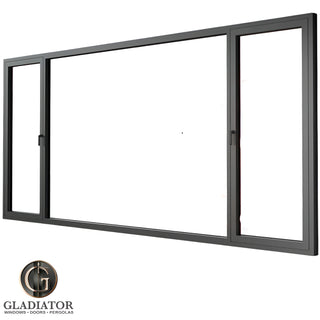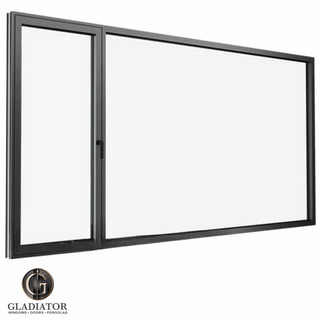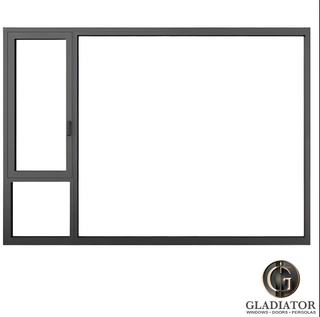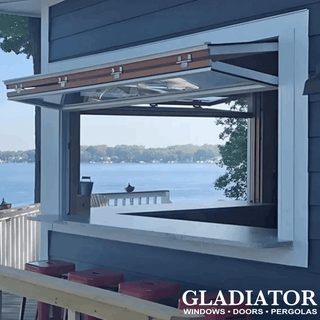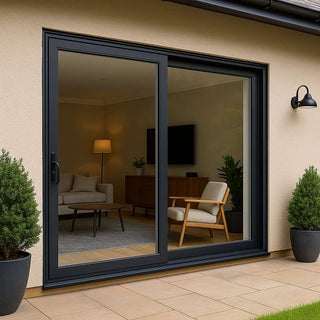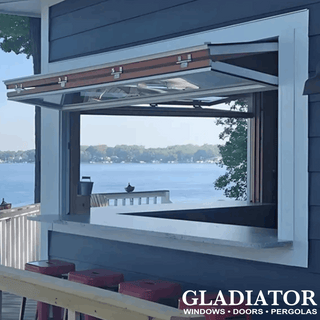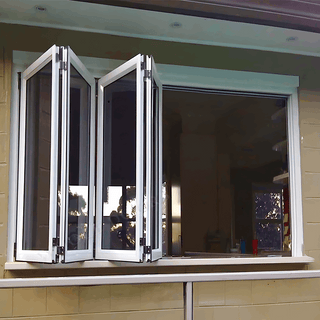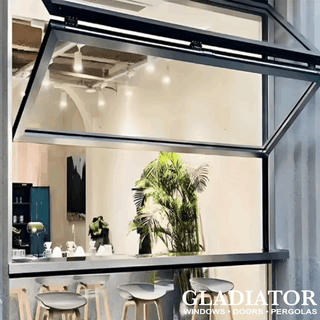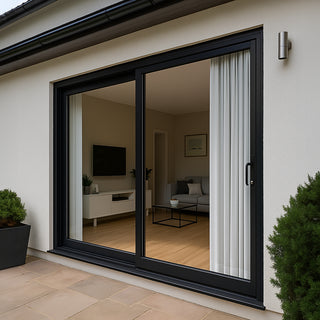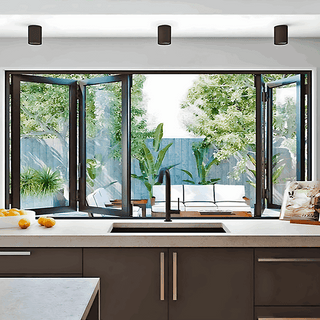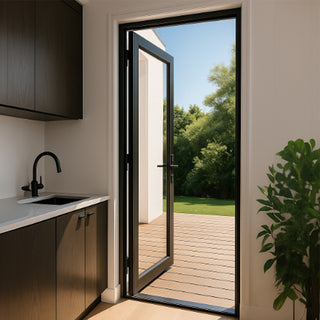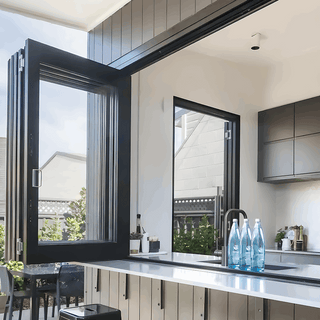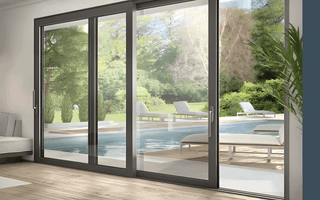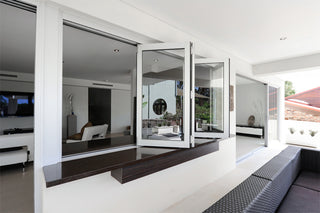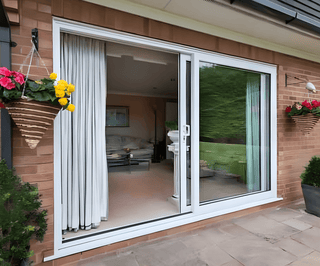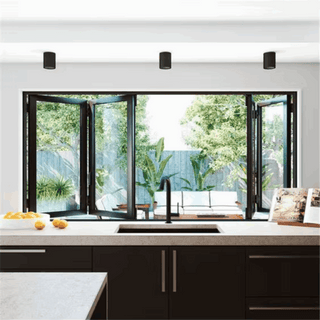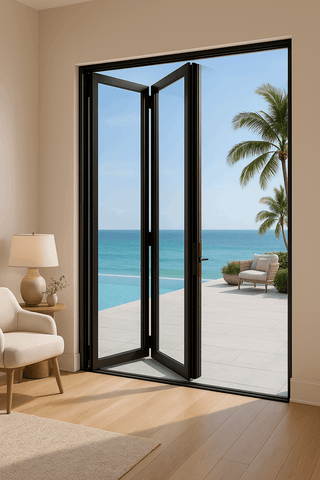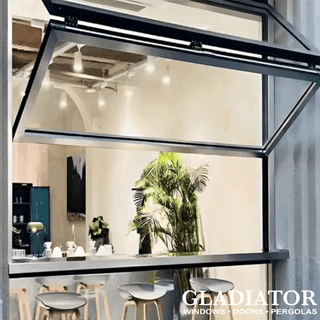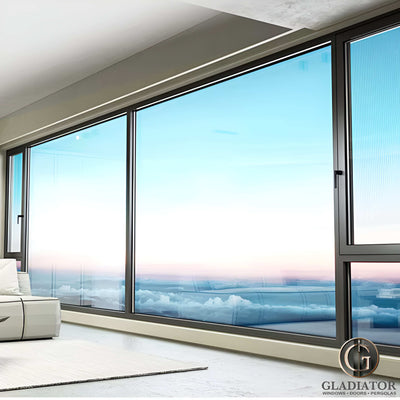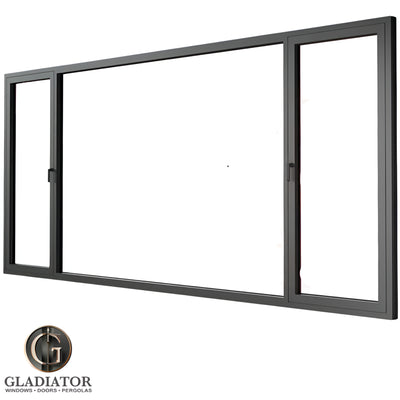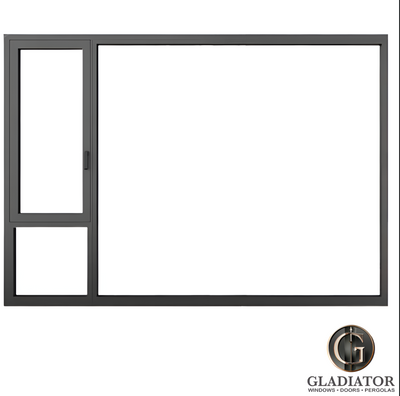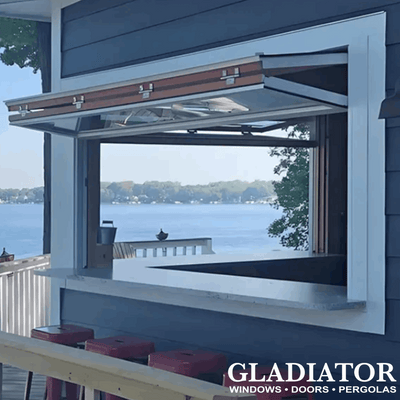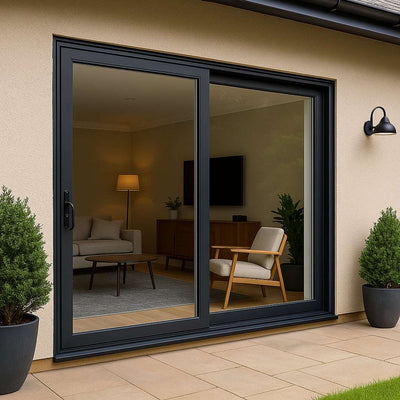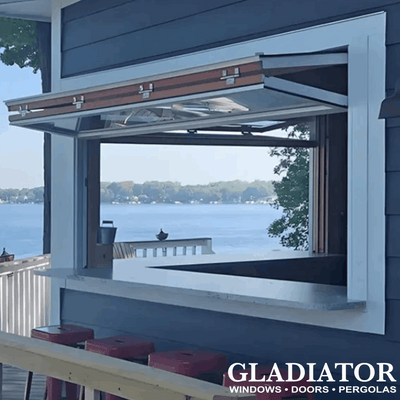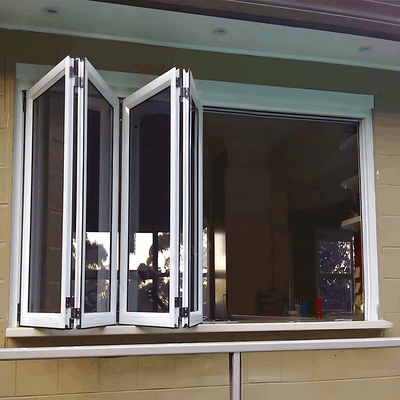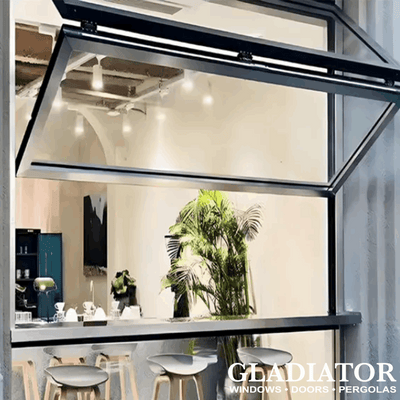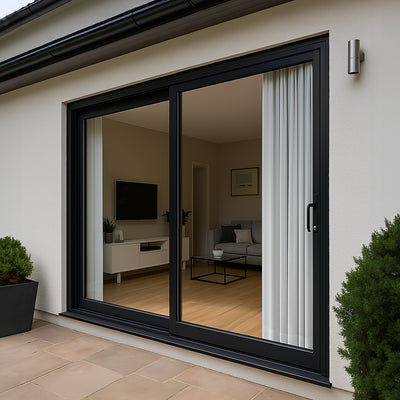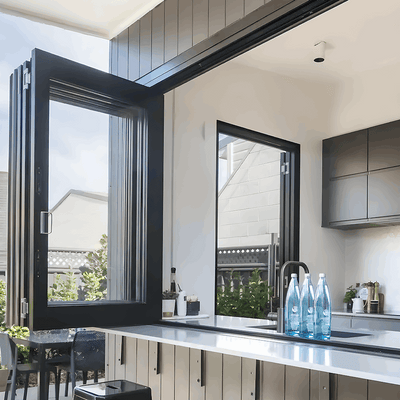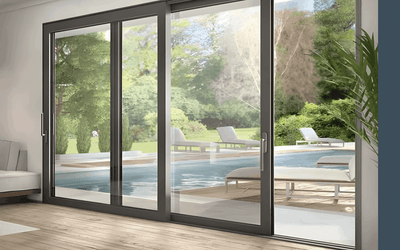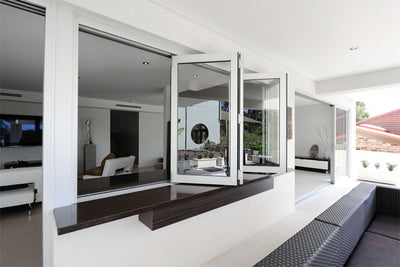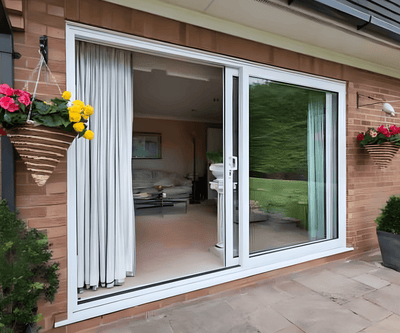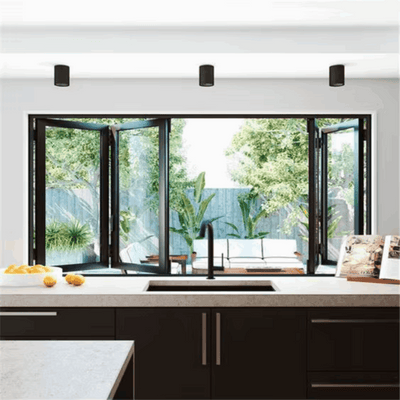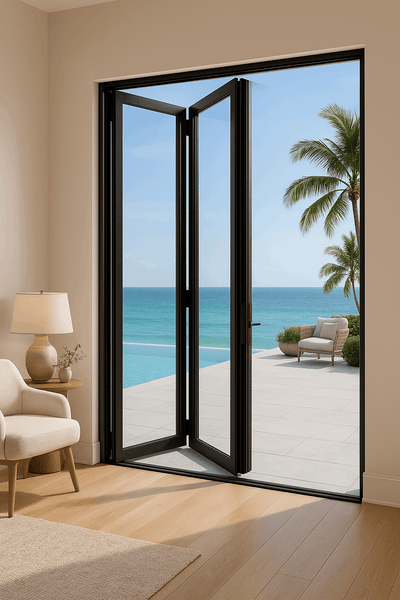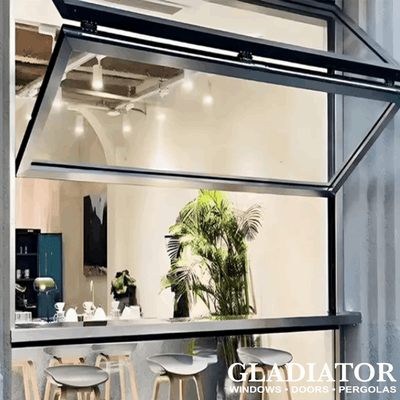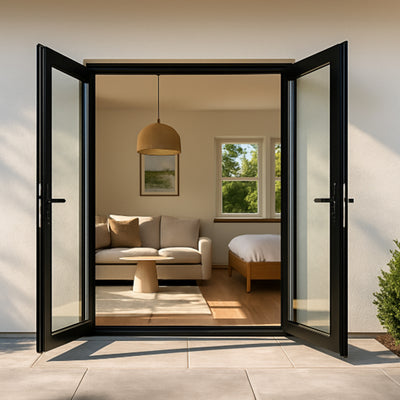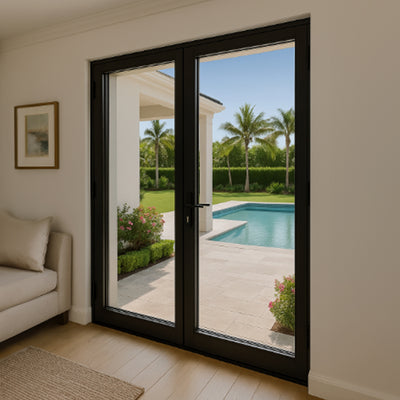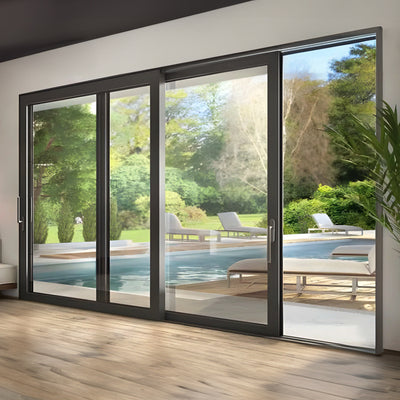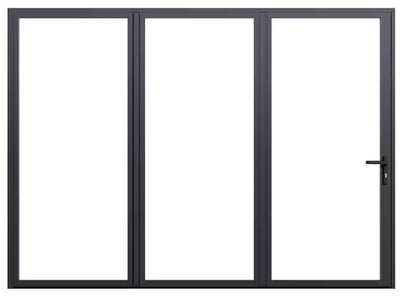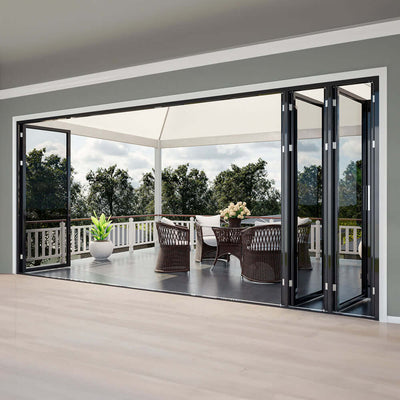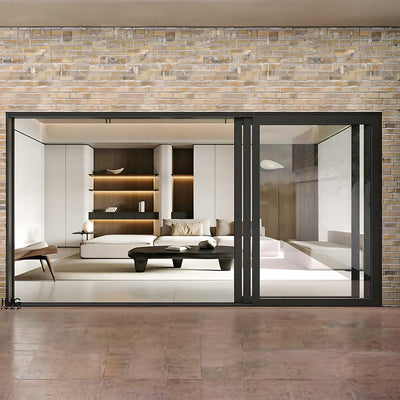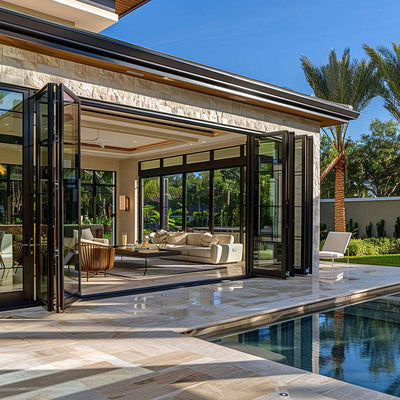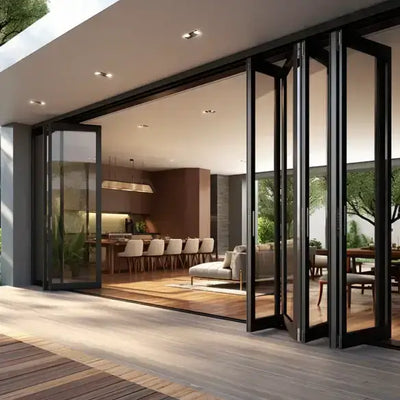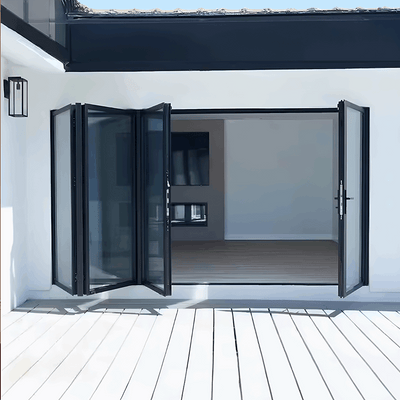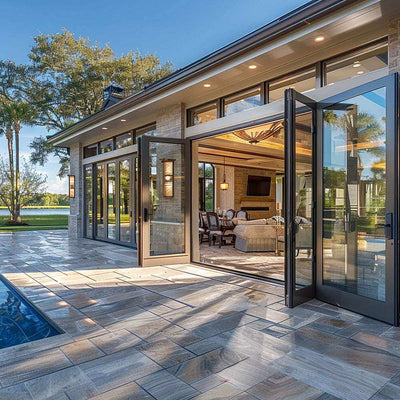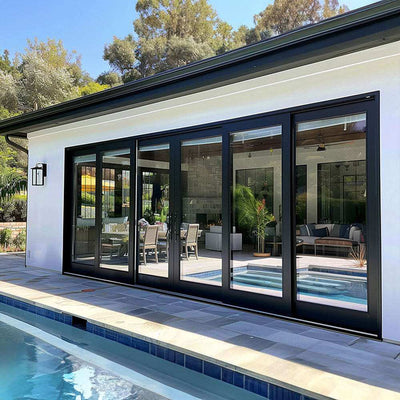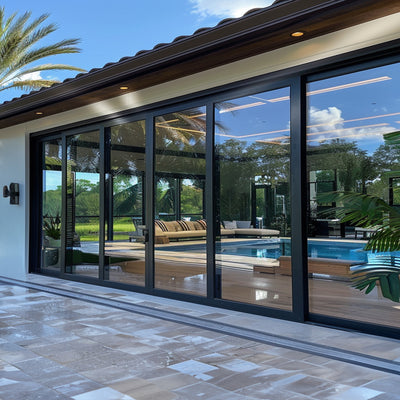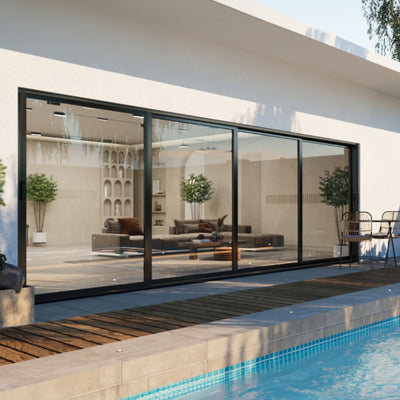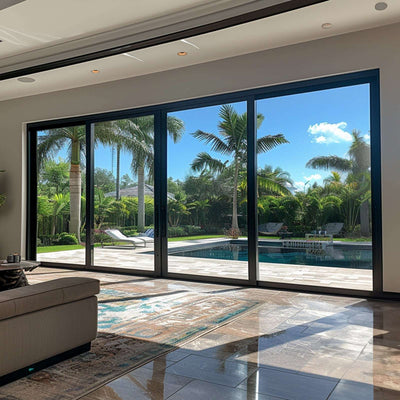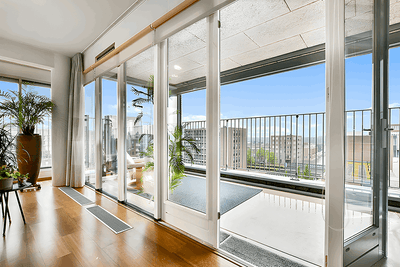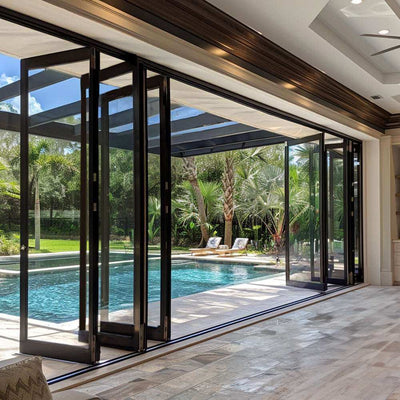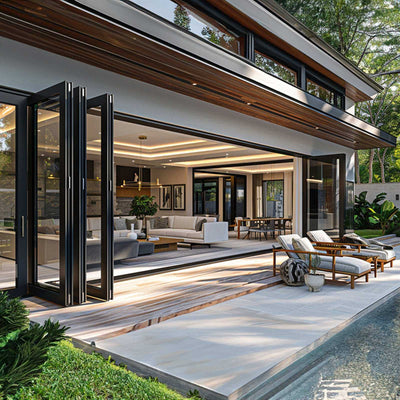Unlocking the Perfect Fit: Your Guide to Sliding Glass Door Sizes
Knowing standard sliding glass door measurements is crucial for a smooth renovation or new construction project. This guide provides a concise list of common sizes, from the standard 6-foot patio door to expansive 16-foot systems, helping you quickly determine the perfect fit. Whether you're a homeowner, contractor, or builder, understanding these standard sliding glass door measurements will save you time and ensure a successful installation. We'll also cover commercial and international specifications.
1. 6-Foot (72-inch) Standard Two-Panel Sliding Door
When discussing standard sliding glass door measurements, the 6-foot (72-inch) two-panel sliding door reigns supreme. This configuration has become the most common residential sliding glass door specification, largely due to its compatibility with standard construction practices and widespread availability. Understanding its dimensions, benefits, and limitations is crucial for homeowners, contractors, and anyone involved in building or renovation projects.
This standard sliding door operates on a simple principle: two panels, typically made of glass, are housed within a frame. One panel is fixed in place, while the other slides horizontally along a track. This allows for easy access to patios, balconies, and decks. The standard dimensions of 72 inches wide by 80 inches high (6'8") make it a perfect fit for the 6-foot rough openings commonly found in American homes. This prevalence stems from the standardization of construction materials and framing practices, making this door size highly efficient to manufacture and install.
For example, imagine a typical suburban home with a patio accessible through sliding glass doors. In most cases, you'll find this standard 6-foot two-panel door. The same applies to apartment balconies and small deck connections. Its popularity makes it the most affordable option due to mass production, readily available from major manufacturers like Pella Corporation, Andersen Windows, Milgard Windows & Doors, and Jeld-Wen. This readily available inventory translates to easy replacement and maintenance, with abundant hardware and parts readily accessible. Budget-friendly home renovations often leverage this standard size for its cost-effectiveness and ease of installation.
However, this standard size isn't without its limitations. The primary drawback is the limited opening width. Since only one panel slides, only half of the total width is accessible at any given time. This can feel cramped in larger spaces or when moving bulky furniture. Additionally, the standardized nature of this door offers limited customization options. For commercial applications or unique architectural designs, a custom-sized door might be necessary.
Before diving into the specifics, let's review the key features of this standard sliding glass door:
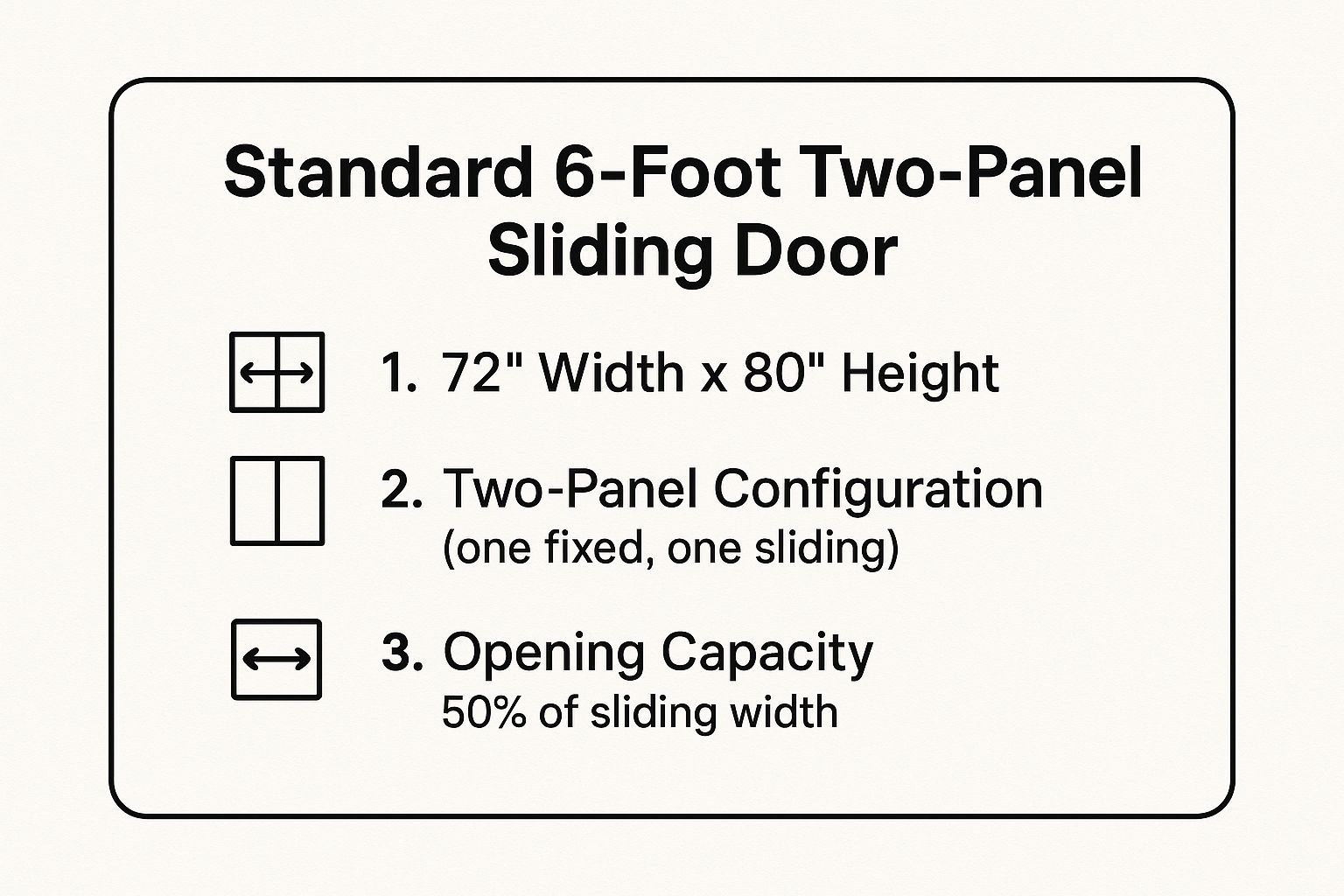
This infographic summarizes the key data points for the 6-foot two-panel sliding door, highlighting the standard 72" x 80" dimensions, the two-panel configuration, and the crucial fact that only 50% of the doorway is openable. This limited opening capacity is a key consideration when choosing this standard size.
So, when is the 6-foot two-panel sliding door the right choice? It’s ideal for standard residential applications where cost-effectiveness, ease of installation, and readily available replacement parts are prioritized. It’s a practical solution for most homes and apartments where the rough opening conforms to the 6-foot standard. Learn more about 6-Foot (72-inch) Standard Two-Panel Sliding Door for a deeper understanding of accurate measurements and perfect fit.
Here are some actionable tips for homeowners and contractors considering this standard sliding glass door:
- Verify rough opening dimensions: Always measure your rough opening before ordering. Allow 2-3 inches larger than the door size for proper installation.
- Consider door swing direction: Think about furniture placement and traffic flow to determine whether a left or right sliding operation is optimal.
- Check local building codes: Ensure your chosen door meets local building codes, particularly regarding glass safety requirements.
While the 6-foot two-panel sliding door offers numerous advantages in terms of cost and availability, it's essential to weigh the pros and cons carefully. If your project requires a wider opening, greater customization, or a more unique design, exploring alternative sliding door configurations might be necessary. However, for standard residential applications, the 6-foot two-panel door remains a reliable and practical solution.
2. 8-Foot (96-inch) Premium Two-Panel Sliding Door
When discussing standard sliding glass door measurements, the 8-foot (96-inch) two-panel sliding door stands out as a premium option that elevates both functionality and aesthetics. This size signifies a shift towards larger, more expansive doorways, offering a substantial upgrade from the standard 6-foot sliding door. It provides significantly more opening space, enhancing traffic flow and creating a seamless transition between indoor and outdoor living areas. This measurement refers to the total width of the door frame, encompassing both sliding panels. Each panel in a typical 8-foot two-panel configuration measures 48 inches wide, allowing for a generous 4-foot opening when one panel is slid open. Understanding this measurement is crucial for homeowners, contractors, and builders when planning new construction, renovations, or replacements, as it impacts not only the door's functionality but also the necessary structural support and rough opening dimensions.
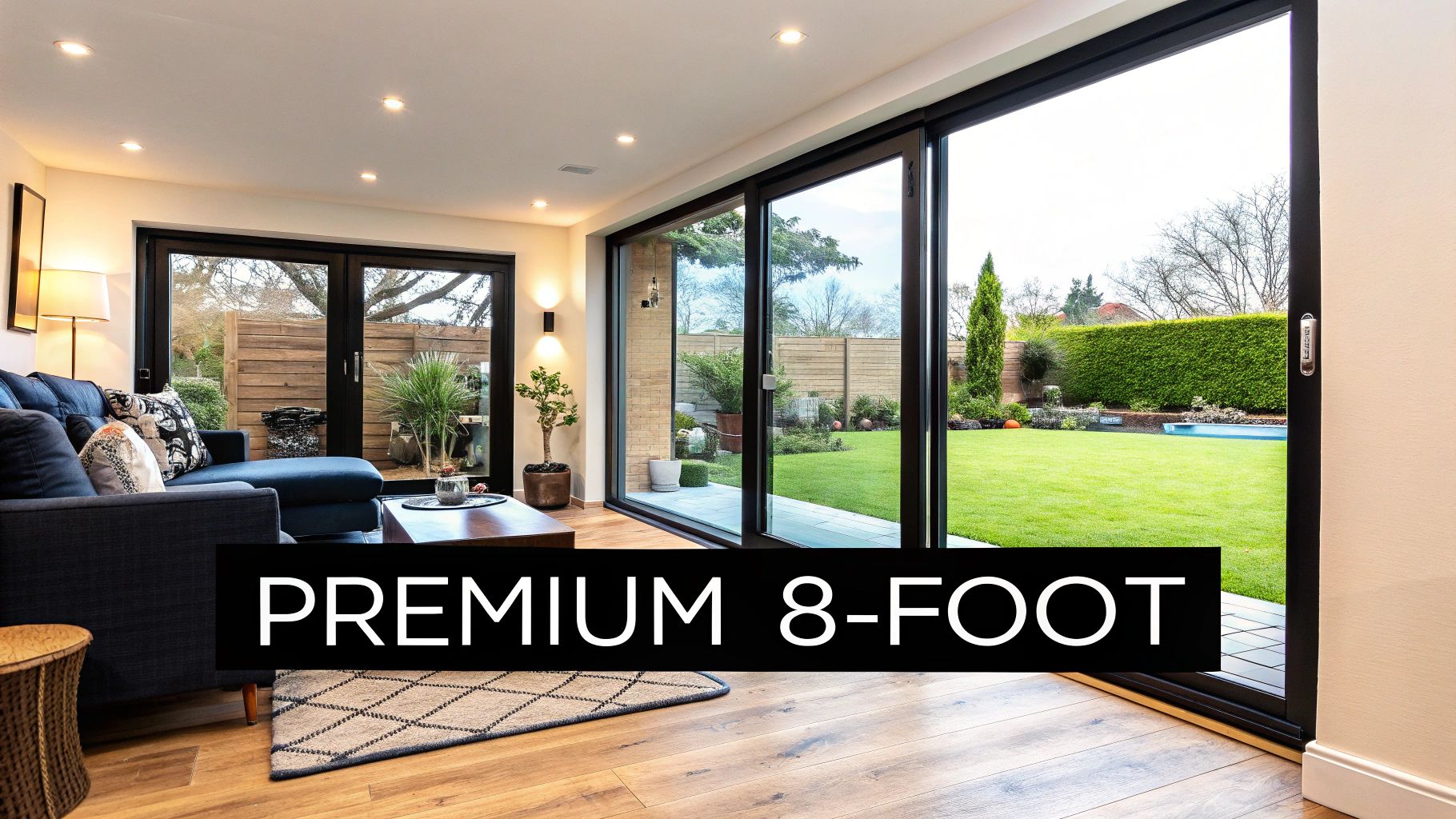
The 8-foot width became increasingly popular in the 1990s, coinciding with the trend of larger homes and a greater emphasis on integrating outdoor living spaces. This wider door frame allows for a more substantial glass area, maximizing natural light penetration and offering unobstructed views of the exterior landscape. While the standard height for sliding glass doors remains 80 inches, 96-inch height options are also available for the 8-foot width, further amplifying the sense of spaciousness and grandeur. This configuration is particularly well-suited for connecting large living areas, such as great rooms or master bedrooms, to patios, decks, or balconies.
The benefits of choosing an 8-foot sliding glass door are numerous. The 50% larger opening compared to a standard 6-foot door significantly improves traffic flow, making it ideal for entertaining and large gatherings. The expansive glass area dramatically increases natural light, brightening interior spaces and reducing the need for artificial lighting. Furthermore, the enhanced visual impact adds a touch of elegance and sophistication, potentially boosting home resale value. Upscale residential developments and custom home construction frequently feature these larger doors to meet the demands of discerning homeowners.
However, it's essential to consider the practical implications of installing an 8-foot sliding glass door. The larger dimensions necessitate a wider rough opening, which might require structural modifications in existing homes. The heavier panels also demand robust, high-quality hardware and heavy-duty track systems to ensure smooth and reliable operation. The overall cost is naturally higher than that of a standard 6-foot door due to the increased material and labor requirements. Therefore, careful planning and budgeting are crucial when opting for this premium option. Ensure adequate structural support for the wider opening and consider features like multi-point locking systems for enhanced security. Upgrading to low-E glass is a wise investment for improved energy efficiency.
Examples of successful implementation of 8-foot sliding glass doors can be seen in various settings: master bedroom suites with patio access, seamless transitions from great rooms to expansive decks, and prominent features in upscale residential developments. Leading window and door manufacturers like Marvin Windows and Doors, Pella Architect Series, Western Window Systems, and Fleetwood Windows & Doors have contributed to the popularity of this size, recognizing the growing demand for larger, more visually striking doorways. Learn more about 8-Foot (96-inch) Premium Two-Panel Sliding Door Understanding standard sliding glass door measurements is crucial for anyone involved in home construction or renovation. The 8-foot option presents a compelling choice for those seeking to maximize space, light, and visual appeal. By carefully considering the pros and cons and planning accordingly, homeowners can leverage this premium feature to enhance their living spaces and create a seamless connection with the outdoors.
3. 12-Foot (144-inch) Multi-Panel Sliding Wall System
When discussing standard sliding glass door measurements, the impressive 12-foot (144-inch) multi-panel sliding wall system stands out as a premium option. This system, often comprised of three or four panels, transcends the traditional sliding door and creates a dynamic "sliding wall" effect, transforming the boundary between indoor and outdoor spaces. While its roots lie in commercial architecture, this expansive standard has steadily gained popularity in high-end residential projects, offering homeowners a dramatic and functional architectural statement. This system usually consists of two sliding panels and one or two fixed panels, allowing for a large opening while maintaining structural integrity. Understanding the nuances of this system, including its installation requirements and associated costs, is crucial for anyone considering this striking design feature.
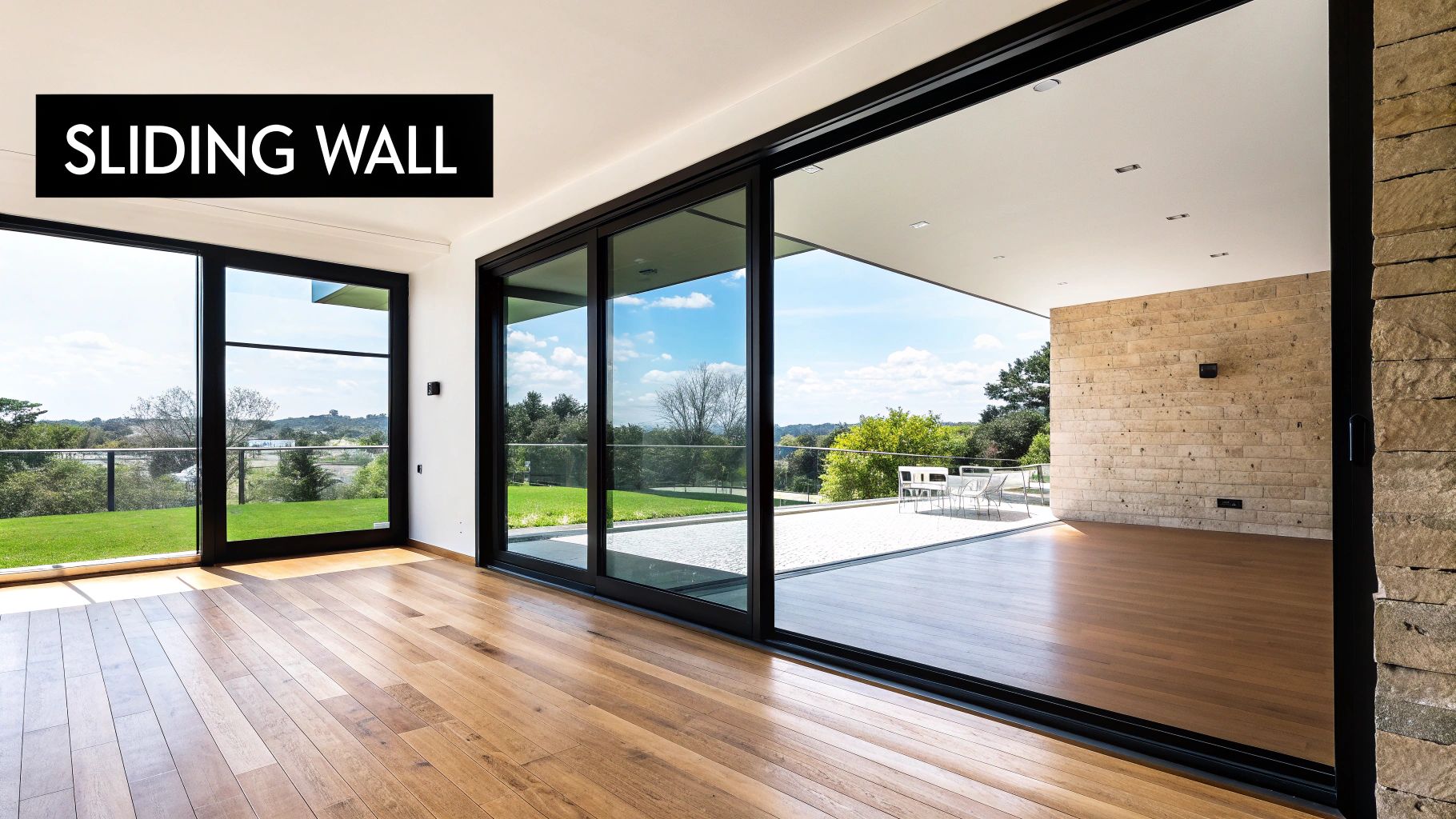
The operational mechanics of a 12-foot multi-panel system typically involve multiple track systems, allowing for smooth and effortless sliding action. These systems often utilize either pocket or bypass sliding mechanisms. Pocket systems allow the sliding panels to disappear into a wall cavity, maximizing the open space when the doors are fully retracted. Bypass systems, on the other hand, have the panels slide past one another, offering a flexible balance between open and closed areas. The sheer size and weight of these systems necessitate commercial-grade structural requirements, often including reinforced headers and framing. Furthermore, floor-to-ceiling options are readily available, amplifying the sense of grandeur and connection to the outdoors.
The benefits of incorporating a 12-foot multi-panel sliding wall system are significant. They create a seamless indoor-outdoor transition, blurring the lines between living spaces and extending entertaining areas. The maximum opening width offered by these systems allows for unparalleled ventilation and breathtaking views. This expansive design element serves as a dramatic architectural statement, adding a touch of modern elegance to any home. Imagine a luxury home's great room opening onto a patio, a resort seamlessly blending with its natural surroundings, or a modern architectural home featuring a stunning glass wall façade. These are just a few examples where this system shines. Learn more about 12-Foot (144-inch) Multi-Panel Sliding Wall System for further information and inspiration.
However, it's essential to be aware of the challenges associated with these systems. Significant structural modifications are often required, which can be costly and disruptive. The cost of the system itself, coupled with the complex installation process, necessitates a higher budget than traditional sliding doors. Professional design consultation is highly recommended to ensure proper integration with the existing structure and to address specific design requirements. Due to the specialized nature of these systems, manufacturer options might be limited. Finally, larger glass panels require more diligent maintenance to ensure their continued smooth operation and pristine appearance.
For homeowners considering this investment, careful planning is key. Engaging a structural engineer early in the planning process is crucial for assessing structural needs and ensuring proper load-bearing capacity. Wind load requirements, especially for large panels, should also be carefully considered, particularly in coastal or high-wind areas. It's also essential to plan for the electrical and HVAC implications of such a large opening. Wiring for lighting, security systems, and motorized blinds needs to be factored in, along with considerations for heating and cooling efficiency. Finally, budgeting for custom installation requirements is vital, as these systems often require specialized expertise. Leading manufacturers in this space include NanaWall Systems, LaCantina Doors, Western Window Systems, and Fleetwood Architectural Products. They offer a range of options and customization possibilities for discerning homeowners. By understanding the complexities and benefits of the 12-foot multi-panel sliding wall system, you can make an informed decision about whether this stunning architectural element is the right fit for your project. This system rightfully earns its place on the list of standard sliding glass door measurements as it represents the pinnacle of design and functionality in large-scale glass door systems.
4. Commercial Standard 8-Foot Height (96-inch) Specification
When discussing standard sliding glass door measurements, it's crucial to distinguish between residential and commercial applications. While residential doors typically prioritize aesthetics and energy efficiency, commercial settings demand heightened durability, security, and accessibility compliance. This is where the commercial standard 8-foot (96-inch) height specification comes into play. This standard dictates a specific set of dimensions and features that cater to the unique demands of commercial spaces, making it a critical consideration for architects, contractors, and building owners.
This standard primarily governs the height of the sliding glass door, fixing it at 96 inches. This increased height, compared to standard residential doors, contributes to a more imposing and professional appearance, fitting for commercial buildings like offices, retail stores, and institutions. While the height remains constant, the width can vary considerably, typically ranging from 6 to 16 feet, offering flexibility to accommodate different entrance and exit needs. This adaptability in width, combined with the standardized height, makes it possible to create large, accessible openings while maintaining a consistent and professional look throughout a building.
One of the key driving forces behind this standardized height is the Americans with Disabilities Act (ADA). ADA compliance is paramount in commercial settings, and the 8-foot height allows for easier maneuverability for individuals using wheelchairs or other mobility devices. The threshold design is also a critical component of ADA compliance, requiring minimal lippage to prevent tripping hazards and ensure smooth transitions. Moreover, the operation of the doors often incorporates features like automatic openers and wider handles to further enhance accessibility.
Beyond accessibility, security is another crucial consideration in commercial applications. Commercial-grade sliding glass doors within this 96-inch height standard often feature reinforced aluminum framing and enhanced security hardware options, including multi-point locking systems and impact-resistant glass. These features provide a robust defense against forced entry and vandalism, crucial for protecting businesses and their assets. Furthermore, some commercial settings require fire-rated doors, and manufacturers offer options that meet specific fire codes while adhering to the 8-foot height standard.
The benefits of adhering to this standard are numerous. Built-in ADA accessibility compliance simplifies the design and construction process, ensuring that buildings meet legal requirements. The superior durability of commercial-grade materials and hardware withstands the rigors of high-traffic environments, minimizing maintenance and replacement costs. Enhanced security features protect against theft and vandalism, offering peace of mind to business owners. The overall professional appearance contributes to a positive first impression for clients and visitors. And finally, adherence to this standard ensures compliance with commercial building codes, streamlining the permitting and inspection process.
However, there are some drawbacks to consider. Commercial-grade sliding glass doors are generally more expensive than residential units due to the higher quality materials and specialized features. Installation is typically more complex, requiring experienced contractors familiar with commercial-grade hardware and ADA compliance requirements. Due to their size and features, these doors are generally unsuitable for residential applications. Finally, the use of commercial-grade hardware is essential for maintaining performance and security, and substituting residential-grade components can compromise the integrity of the system.
For example, consider the entrance to a busy office building. A commercial-grade sliding glass door system with a 96-inch height allows for a smooth flow of pedestrian traffic, accommodating individuals with disabilities while maintaining a secure and professional appearance. Similarly, in a retail setting, these doors provide a welcoming entryway that is both visually appealing and accessible, contributing to a positive customer experience. In hospitals and educational institutions, these doors play a vital role in ensuring safe and accessible access for patients, staff, and students.
When planning to incorporate commercial sliding glass doors, it's crucial to verify ADA compliance requirements early in the design process. Consider incorporating automatic operation to further enhance accessibility and convenience. It's also important to plan for the increased weight of commercial units during structural design and installation. And finally, ensure compliance with local fire codes, especially when specifying fire-rated doors.
Key manufacturers of commercial sliding glass door systems that meet this standard include Kawneer Company, YKK AP America, EFCO Corporation, and Tubelite Inc. Their product lines offer a range of options to meet diverse commercial needs.
Learn more about Commercial Standard 8-Foot Height (96-inch) Specification
Understanding standard sliding glass door measurements is crucial for making informed decisions when designing and constructing commercial buildings. The 8-foot (96-inch) height specification, while seemingly simple, plays a vital role in ensuring accessibility, security, and compliance with building codes. By carefully considering these factors, building owners and contractors can create functional and aesthetically pleasing entrances that meet the demands of modern commercial spaces.
5. European Standard DIN 18055 Sliding Door Specification
When discussing standard sliding glass door measurements, it's crucial to acknowledge the international variations that exist. While North American standards dominate much of the market, the European standard DIN 18055 offers a distinct approach to sliding door design and functionality, emphasizing performance and security. This standard, developed by the Deutsches Institut für Normung (DIN), the German Institute for Standardization, establishes precise metric dimensions and stringent performance requirements for sliding doors. Understanding this standard is vital for anyone involved in international construction projects, high-performance building design, or even homeowners considering importing European-style doors.
The DIN 18055 standard provides a framework for manufacturers, ensuring consistency and quality across the European market. It specifies common widths like 1800mm, 2100mm, and 2400mm, coupled with standard heights of 2100mm or 2400mm. These metric dimensions are fundamental to understanding standard sliding glass door measurements within the European context. While these sizes might seem unusual to those accustomed to imperial measurements, they offer a level of modularity well-suited to European construction practices. Furthermore, the standard dictates not only dimensions but also performance characteristics, particularly regarding thermal efficiency and security.
One key advantage of adhering to DIN 18055 is the superior energy efficiency achieved through advanced design and materials. The standard pushes manufacturers to prioritize thermal performance, resulting in doors that minimize heat transfer and contribute to lower energy consumption. This focus on thermal performance aligns with the broader European emphasis on sustainability and energy conservation. Double and triple glazing, along with thermally broken frames and advanced sealing systems, are commonly incorporated into doors meeting this standard.
Security is another crucial aspect addressed by DIN 18055. Compliance with the RC2 security rating is often a requirement, meaning the doors have been tested and proven to resist certain levels of forced entry. This is commonly achieved through multi-point locking systems, reinforced frames, and laminated safety glass. For homeowners and builders, this enhanced security provides peace of mind.
A notable feature of many doors designed to this standard is the tilt-and-slide operation. This mechanism allows the door to be tilted inwards for ventilation without fully opening the sliding panel. This functionality offers a versatile solution for controlling airflow and enhancing indoor comfort.
While the DIN 18055 standard offers numerous benefits, there are also considerations to keep in mind, particularly for projects outside Europe. The metric sizing can create challenges when integrating these doors into buildings designed with imperial measurements. This often necessitates adjustments during the design and construction phases. Additionally, the availability of DIN 18055 compliant doors in North America is limited, often requiring direct importation and potentially leading to higher costs. Specialized hardware and service requirements can further add to the complexity.
Despite these challenges, the adoption of DIN 18055 compliant doors is growing, particularly in niche applications. European-style homes in North America sometimes incorporate these doors to maintain architectural authenticity. Similarly, passive house construction projects, which prioritize energy efficiency, often utilize DIN 18055 doors for their superior thermal performance. In international architectural projects, adhering to a recognized international standard like DIN 18055 simplifies design and procurement.
For those considering incorporating DIN 18055 compliant doors, several tips are crucial. First, verify compatibility with existing or planned construction methods and be prepared for potential adjustments. Sourcing European-trained installers is highly recommended to ensure proper installation and functionality. Considering the long-term availability of replacement parts is also essential. Finally, budgeting for specialized hardware and potential import costs is necessary.
Companies like Schüco International, REHAU, Salamander Windows, and Aluplast are prominent manufacturers of DIN 18055 compliant doors and windows. Researching these and other European manufacturers can provide valuable insights into the various options and specifications available. Understanding and considering the European Standard DIN 18055 offers a valuable perspective on standard sliding glass door measurements, especially when striving for high performance and security.
6. Luxury Oversized 16-Foot (192-inch) Architectural Specification
When discussing standard sliding glass door measurements, it's crucial to understand the upper limits of what's readily available. While most homeowners are familiar with standard sizes ranging from 6 to 12 feet, there exists a category of "standard" that caters to a more exclusive market: the 16-foot (192-inch) architectural specification. This represents the pinnacle of pre-engineered sliding glass door systems, pushing the boundaries of size and design before venturing into the realm of fully custom solutions. Including this category in our list of standard sliding glass door measurements allows us to explore the full spectrum of possibilities and provides valuable information for those seeking to create truly breathtaking spaces.
This impressive 192-inch width is typically achieved using a multi-panel configuration, usually comprising four to six individual sliding panels. These expansive systems are designed to maximize the opening, effectively blurring the lines between indoor and outdoor living. They become a defining architectural element, transforming a simple doorway into a dramatic focal point. Imagine stepping through a seamless wall of glass onto a patio, deck, or balcony, creating an uninterrupted flow and a sense of spaciousness that smaller standard sliding glass door measurements simply cannot achieve.
The features that accompany this premium category are equally impressive. Structural glazing options, which minimize visible framing for an even more unobstructed view, are often available. Integrated automation systems allow for effortless control of the panels, opening and closing them with the touch of a button or through smart home integration. Custom threshold solutions can be incorporated to create a flush transition between interior and exterior spaces, enhancing accessibility and aesthetic appeal. Furthermore, these systems are designed with weather barrier integration in mind, ensuring superior performance against the elements.
Examples of successful implementations of these oversized sliding glass doors can be found in luxury resorts, high-end residential projects, corporate headquarters buildings, and architectural showcase homes. These projects leverage the expansive glass to create striking visual impact, enhance natural light penetration, and foster a connection with the surrounding environment.
However, such grand designs come with their own set of considerations. The cost for these systems is significantly higher than standard sliding glass door measurements, reflecting the premium materials, advanced engineering, and specialized installation required. The complexity of the engineering demands experienced contractors with specific expertise in handling these large and intricate systems. Structural modifications to the building itself are often necessary to accommodate the weight and size of the doors. Finally, long lead times for manufacturing, often ranging from 6 to 12 months, are common.
Therefore, if you're considering this luxury option, careful planning is essential. Engaging architects and engineers early in the design process is paramount. They can assess the structural feasibility, advise on wind load and seismic requirements, and ensure proper integration with the overall building design. Budgeting appropriately is crucial, with the expectation of costs exceeding initial quotes by 15-20%. Verifying warranty and service availability is also essential, given the complexity of these systems.
Learn more about Luxury Oversized 16-Foot (192-inch) Architectural Specification
Despite the higher cost and complexity, the benefits of a 16-foot architectural specification sliding glass door system can be transformative. The maximum standard opening width achievable with this option creates an architectural focal point that elevates the entire space. The seamless indoor-outdoor integration expands living areas and enhances the connection with nature. Advanced automation options offer convenience and control, while premium material selections ensure lasting beauty and performance. By understanding the nuances of standard sliding glass door measurements, including this luxurious upper limit, homeowners, contractors, and builders can make informed decisions that align with their vision and budget. Remember to consider your project's specific requirements and plan diligently to ensure a successful and satisfying outcome. Companies like NanaWall Systems, LaCantina Doors, Panoramic Doors, and Western Window Systems have popularized these large-scale systems, offering expertise and innovation in this specialized area.
Standard Sliding Glass Door Specs Comparison
| Specification | Implementation Complexity 🔄 | Resource Requirements ⚡ | Expected Outcomes ⭐📊 | Ideal Use Cases 💡 | Key Advantages ⭐ |
|---|---|---|---|---|---|
| 6-Foot (72-inch) Standard Two-Panel Sliding Door | Low - Standard rough opening, simple install | Low - Common materials and hardware | Moderate - 50% opening, easy maintenance | Budget homes, apartments, small decks | Affordable, widely available, easy replacement |
| 8-Foot (96-inch) Premium Two-Panel Sliding Door | Medium - Requires stronger support, heavier panels | Medium - Heavy-duty tracks and locks | High - Larger opening, enhanced visual impact | Upscale homes, entertaining spaces, custom builds | Larger view, better natural light, resale value |
| 12-Foot (144-inch) Multi-Panel Sliding Wall System | High - Complex structure, multi-panel tracks | High - Commercial-grade materials | Very High - Seamless indoor-outdoor transition | Luxury homes, resorts, modern architectural builds | Maximum opening, dramatic design, entertainment focused |
| Commercial Standard 8-Foot Height (96-inch) Specification | Medium-High - Meets ADA & fire codes | High - Commercial-grade framing & hardware | High - Durable, secure, compliant | Office, retail, healthcare, institutional | ADA compliant, durable, secure, code meeting |
| European Standard DIN 18055 Sliding Door Specification | Medium - Metric sizing, specialized hardware | Medium-High - Quality seals, multi-point locks | High - Superior energy efficiency and security | Passive house, European-style homes, international | Energy efficient, secure, standardized |
| Luxury Oversized 16-Foot (192-inch) Architectural Specification | Very High - Requires engineering & expert install | Very High - Custom materials, automation | Exceptional - Largest opening, architectural statement | Luxury resorts, corporate HQ, showcase homes | Maximum width, automation, premium materials |
Making the Right Choice: Final Thoughts on Sliding Door Sizes
Understanding standard sliding glass door measurements is paramount for any successful building or renovation project. From the common 6-foot two-panel door to expansive 16-foot architectural designs, and considering specifics like the 8-foot commercial standard or European DIN 18055 specifications, finding the perfect fit impacts not only the aesthetics of your space but also its functionality and your overall budget. We've explored several key sizes in this article, including the popular 8-foot two-panel option and even multi-panel sliding wall systems that can transform your living area. Mastering these concepts ensures a smooth process, avoids costly mistakes, and ultimately leads to the beautiful and functional entrance you envision. If you're dealing with architectural plans or specifications for your sliding door project, using PDF annotation software can be incredibly helpful for collaborating with contractors and suppliers. Check out this helpful resource on the best software to annotate PDF documents from BugSmash.
Choosing the right sliding door size is a crucial step in creating the perfect space. By considering the insights shared here, you'll be well-equipped to select a door that complements your design and enhances your lifestyle. For a wide selection of high-quality sliding glass doors tailored to your specific needs and adhering to industry standard sliding glass door measurements, explore the extensive offerings at Gladiator Window and Doors. Their expertise and Best Offer Guarantee ensure you find the ideal door at an unbeatable price, transforming your vision into reality.








